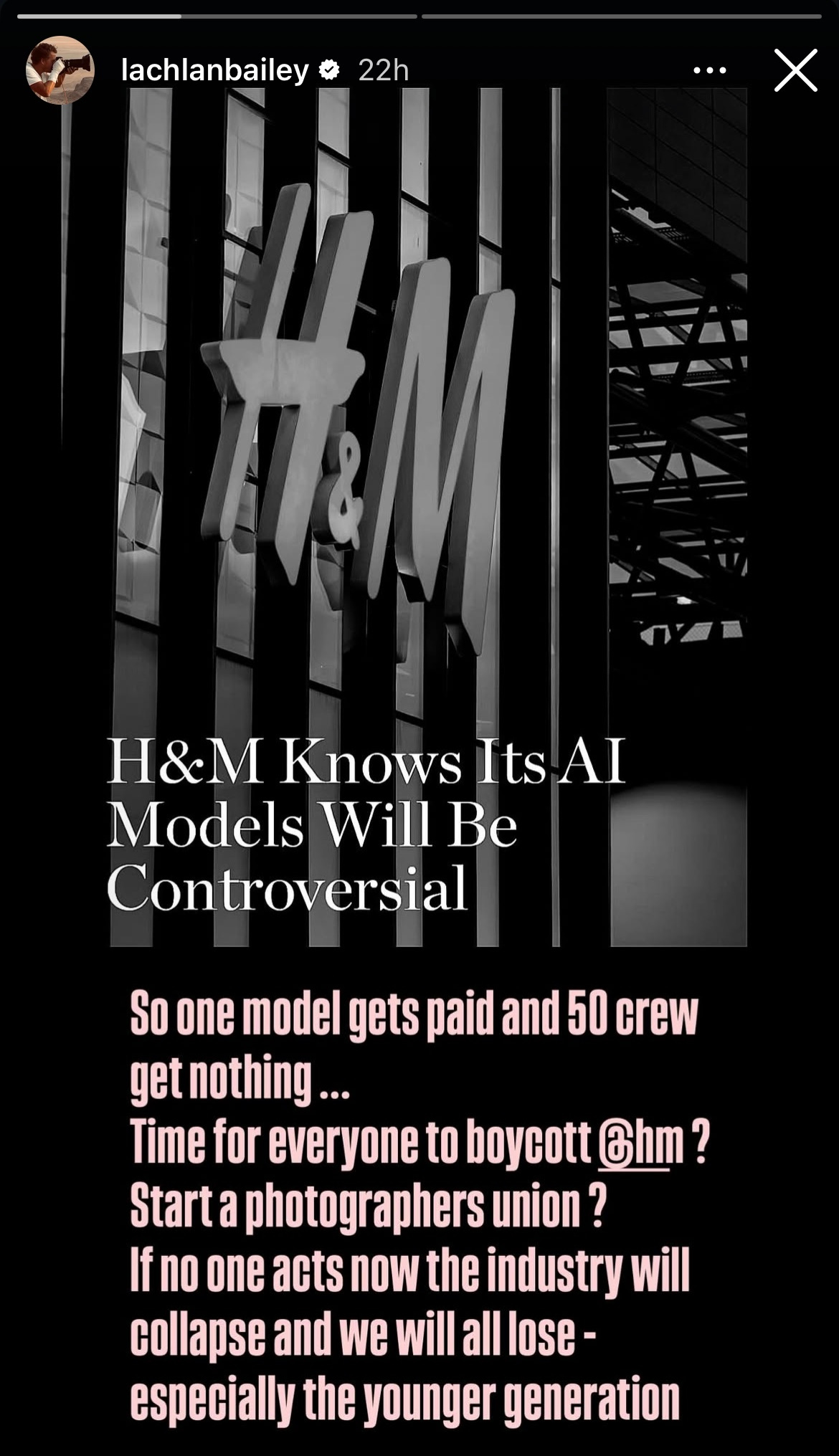AI In Fashion Isn’t Innovation, It’s Exploitation
In a world of digital doubles, what happens to the people who built the industry?
This article is part of Dot Dot Dot’s bi-monthly ‘Pulse Check’ series that provides real-time industry analysis by connecting the dots between trends, brands, and wider cultural movements.
Last week, the Swedish giant unveiled its latest campaign featuring the first wave of AI-generated digital twins — photoreal replicas of real models including Vilma Sjöberg, Jill Kortleve, Vanessa Moody, Yar Aguer, and Colin Jones. Hyperreal, watermarked, licensable to competitors brands, and market-tested to blend seamlessly into your feed.
(All video prompts generated with ChatGPT and video generated with Sora)
The company says it plans to create twins of 30 models over the next year. But even this first launch which included bizarre, dystopian taglines like “My dad raised me on Sci-Fi and and Future Tech, I know he’ll love my digital twin as much as I do,” was enough to spark a reckoning.
H&M’s messaging was clean: this isn’t replacement, it’s empowerment. Models will own their twins, monetize them, license them to other brands. It’s progressive, it’s flexible, it’s… everything a press release should say.
But then came the comments.
Under The Business of Fashion’s Instagram post, the industry didn’t just speak, it shouted. “Impossible to create a great image without the character of the person in it,” said stylist Tom Van Dorpe. Photographer Jack Davison gave it a thumbs down. Model Indira Scott simply said, “nah.” And in a poll, 74% of BoF’s audience said AI models should be banned from fashion altogether.
Photographer and frequent H&M collaborator Lachlan Bailey even posted on his Instagram Stories, “So one model gets paid and 50 crew get nothing… Time for everyone to boycott H&M? Start a photographer’s union? If no one acts now the industry will collapse and we will all lose — especially the younger generation.
This wasn’t backlash from the usual skeptics. These were the photographers, stylists, casting directors (the people who actually make fashion happen) calling it out in real time.
Even H&M itself admitted it doesn’t have it figured out. As quoted by BoF:
“The company also acknowledges that it doesn’t have all the answers and needs to figure out details about how this approach will work. It doesn’t know all the impacts using digital twins will have on models, not to mention the other workers whose livelihoods could be upended — photographers, makeup artists, hair stylists, wardrobe stylists and others — if more fashion imagery is made by prompting an AI tool.”
Let’s be clear here. This isn’t thoughtful innovation. This isn’t a testing kitchen. This is one of the world’s most influential fashion brands experimenting with livelihoods, with no contingency plan if it fails. And when it does, it won’t be executives who lose out. It’ll be the invisible creatives that keep this industry standing.




